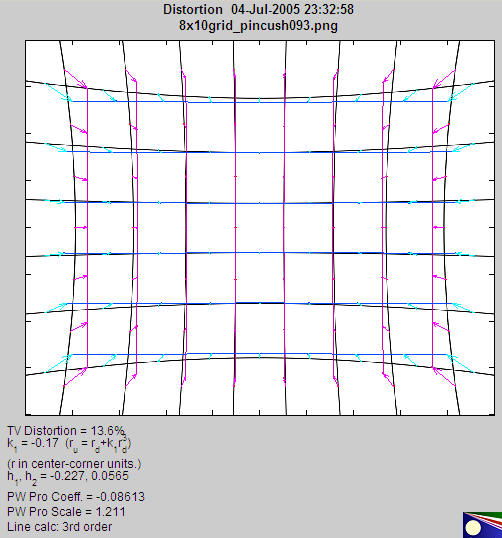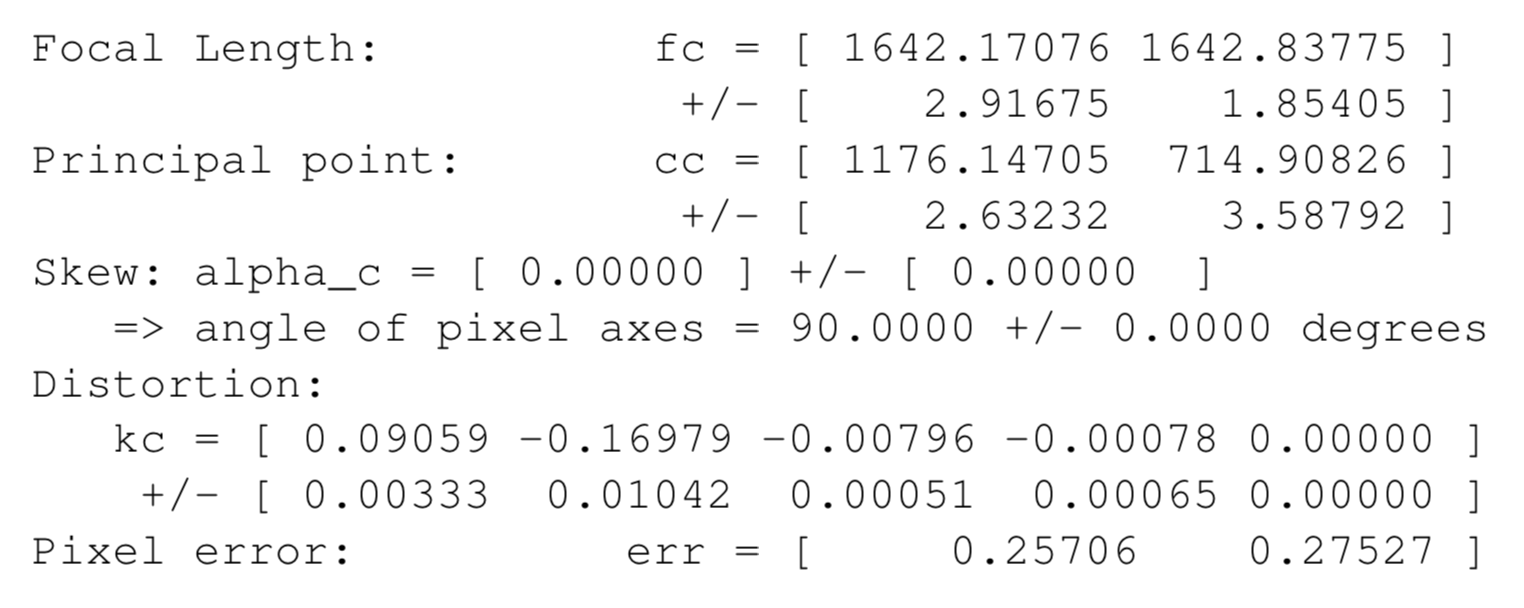

Camera lens distortion coefficients free#
Many other researchers also proposed the nonlinear objective function in three-dimensional space or distortion free space to minimize the calibration error to improve the accuracy of the calibration. Later, Ricolfe-Viala and Sánchez-Salmerón presented a robust metric calibration method with nonlinear camera lens distortion, which computes the camera lens distortion isolated from the camera calibration process under stable conditions, independently of the computed lens distortion model or the number of parameters. Ahmed and Farag proposed a robust approach to distortion calibration by using a least-median-of-squares estimator based on the analysis of distorted straight lines in the images. proposed a new calibration model of camera lens distortion, which is according to a transform from ideal image plane to real sensor array plane. Recently, more research is dedicated to improving the performance of the camera calibration. Zhang proposed a flexible calibration technique for desktop vision system (DVS) by using a printed planar calibration pattern, which is a typical representative of the two-step method. Later, the nonlinear calibration method is developed by introducing a variety of lens distortion. introduced the first linear method by computing the transformation matrix based on the pinhole model. Besides, the traditional method consists of three types: the linear method, nonlinear optimization method, and the two-step method. In general, to satisfy the high-accuracy requirement, we always make use of the traditional camera calibration method. The traditional camera calibration methods use scene information, including the points or lines with precise coordinates, to solve camera parameters, while self-calibration methods only use the relationship between the sequences of images to solve the camera parameters. Nowadays, the techniques of camera calibration can be divided into two categories: the traditional camera calibration and the self-calibration of the camera. Therefore, the study of a flexible and high-precision camera calibration method has very important significance. Camera calibration precision directly affects the measuring accuracy of vision measurement system. The intrinsic parameters describe the geometry of imaging process, while the extrinsic parameters indicate camera position and attitude in the world coordinate system. Camera model parameters include intrinsic and extrinsic parameters. IntroductionĬamera calibration is an important part of the application of photogrammetry that aims to compute the camera model parameters from two-dimensional images. Experimental results show that the proposed method can be obtaining a higher accuracy than the classical methods. Both simulation and real data experiment demonstrate the robustness and accuracy of the proposed method.

Moreover, whether it is for relatively small image distortion or distortion larger image, utilizing our method can get a good result. In the proposed method, the distortion coefficients and intrinsic parameters are successfully decoupled calibration accuracy is further improved through the subsequent optimization process. Finally, the intrinsic parameters of the camera are optimized via the Levenberg-Marquardt algorithm. Then, based on the radial distortion of the division model, the camera intrinsic parameters and distortion coefficients are solved in a linear way independently. Firstly, we compute the center of radial distortion, which is important to obtain optimal results. In this paper, we propose a flexible and high-accuracy method to calibrate a camera.
Camera lens distortion coefficients how to#
the input variables I've listed, and I don't understand enough about optics to know how to generate them.Camera calibration is a necessary process in the field of vision measurement. I haven't been able to find an explanation of these parameters w.r.t. One such example is for a GoPro, a person found these values: ] I would like to work with a notional camera. Most people get these coefficients by calibrating using a real camera.


It looks like cv2.projectPoints() can do this, but it requires a set of distortion coefficients, K 1, K 2, P 1, P 2, etc. My goal is to transform a set of 3D points in space into 2D points on the camera's sensor.


 0 kommentar(er)
0 kommentar(er)
